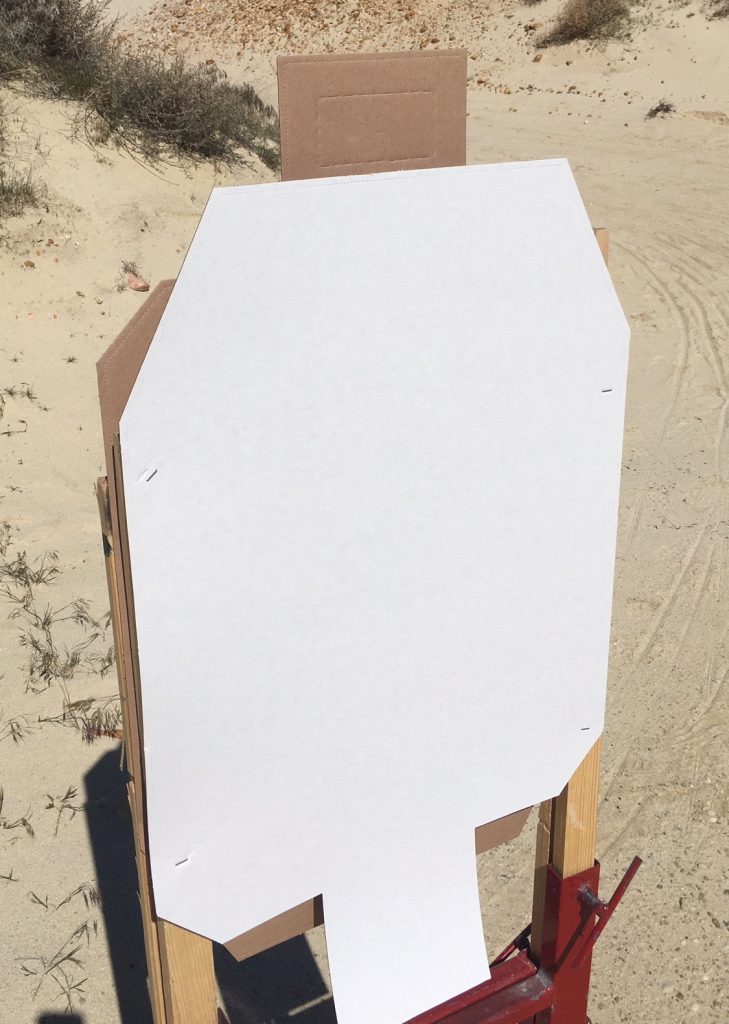In the 2020 rulebook, some changes were made to section 9.9 that changed how certain activated targets are scored if the target is never activated. We wanted to see how many folks noticed the change and as a result asked the following Question of the Month: The Max Trap in the picture is activated by a stomp pad. The competitor shoots the target putting two hits in the upper A-zone and never activates it. How do you score the target?

Here are the results:
The correct answer is two Alpha, so let’s look at why that is the answer per the rules. First, we have to determine which type of activated target this Max Trap is. We have two types of activated targets: non-disappearing and visible targets described in 9.9.1 and disappearing and appearing targets described in 9.9.2.
Non-disappearing and visible targets are moving targets that present a legal portion of the A-zone before activation or after movement. Remember that the legal portion of the A-zone is 25% of the lower A-zone or entire upper A-zone on a USPSA target and 25% of the A-zone on an IPSC target. So, these targets either present a legal portion of the A-zone before activation (like the Max Trap in our picture), or are hidden prior to activation and after movement present a legal portion of the A-zone (like a swinger that is hidden behind a wall before activation).
Disappearing and appearing targets are targets that are completely hidden (or don’t meet the legal A-zone visibility requirements) before activation, are briefly exposed and then become hidden again. Basically the competitor only has one opportunity to engage the target and then it becomes unavailable. Examples of these types of target are drop-turners (a.k.a. gravity turners) and a Max Trap where the no-shoot covers the entire scoring target.
Based on these definitions, we have a visible target in the picture. The entire upper A-zone is visible prior to activation. Okay, what happens if the target is not activated? If you look at the last sentence of 9.9.1, it says that if a target meets the minimum A-zone requirements before activation, it may be shot before activation and activation is not required. That sentence also says that 9.9.3 does not apply. Following so far?
But what does 9.9.3 say? Well, it says a lot of things, but let’s break down the important parts in relation to the question. 9.9.3 says that failing to activate a target before or with the last shot results in misses and a failure to shoot at penalty. Okay, the competitor didn’t activate the target, so doesn’t that mean he gets two misses and a FTSA? Well, per the old rule, on a Max Trap set as in the picture, that was the case. But, in 2020 we updated 9.9.3 and added a sentence that says: “This does not apply to legally presented targets that are available to be shot prior to activation (9.9.1).” So, now since that target meets the minimum A-zone visibility requirements before activation, 9.9.3 doesn’t apply.
The moral of the story, if you want to compel competitors to activate targets before they shoot at them, make sure that they are hidden. And when you are working a stage as the RO or CRO, make sure you know which kind of activated target you have, so you can make the correct call.
Make sure to visit the blog homepage and select your answer for the current Question of the Month.